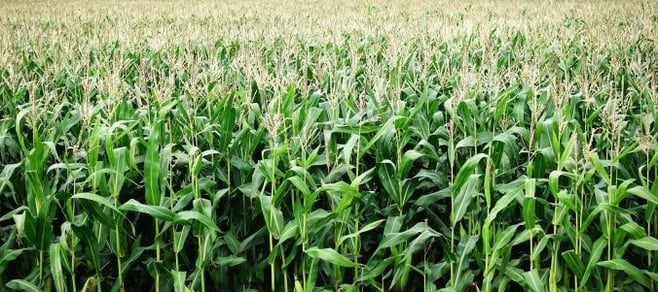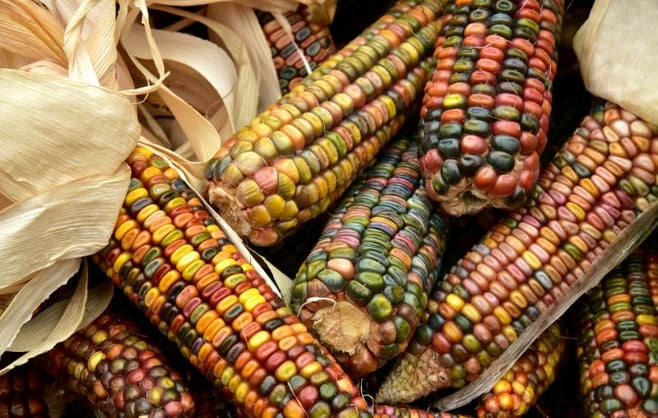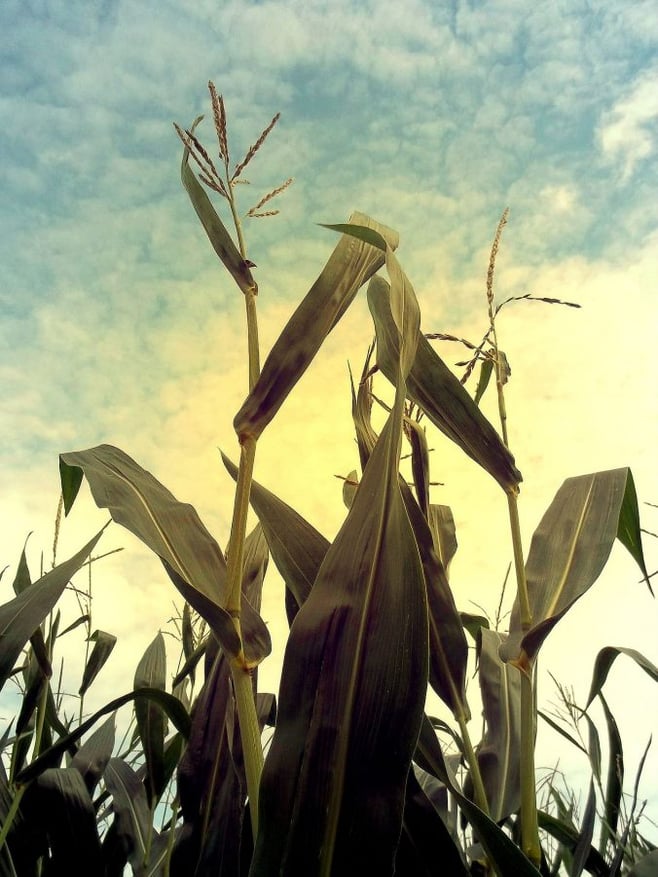
Anything from creamed to casserole, nearly everyone will have some form of corn at their Thanksgiving meal. That a good reason to pay tribute to grain and National Maize Day on November 23rd. Check out the following 30 facts about corn:
- In most countries corn is called maize.
- Maize is a native Taino word meaning “sacred mother,” or “giver of life.”
- The ear or cob is part of the flower, while the individual kernel is a seed.
- The average ear has 800 kernels in 16 rows.

- A cob will always have an even number of rows.
- Except for Antarctica, maize is produced on every continent.
- There are over 3,500 different uses for corn products.
- The grain is used as a major ingredient in many food items like cereals, potato chips, cooking oil, and more.
- Even juices and soft drinks contain sweeteners from the grain. A bushel (about 56 pounds) can sweeten 400 cans of soft drink.
- Corn can also be found in many non-food items such as fireworks, glue, paint, dyes, laundry detergent, soap, antibiotics, cosmetics, and in the production of plastics.
- Maize is also used as feed for livestock, poultry, and in pet food.
- In 2014, the United States produced 35% of the worlds maize, while China produced 21%.
- More than 90 million acres of land is dedicated to growing corn.
- Iowa, Illinois, Nebraska, Minnesota, Indiana, Ohio, Wisconsin, South Dakota, Michigan, Missouri, Kansas and Kentucky make up the “Corn Belt,” a region that has the ideal conditions to grow the crop.

- In the days of the early North American settlers, corn was so valuable that it was used as money and traded meat and furs.
- Maize is believed to be a human invention, domesticated from a grass called teosinte about 7,000 years ago. Read more.
- The grain can be produced in many colors including blackish, blue-gray, purple, green, red, white and yellow.

- There are thousands of hybrids, but most fall into six general types, which are dent, flint, pod, popcorn, flour, and sweet corn.
- On average, the stalk measures 8 to 10 feet tall, however the height depends on the variety and the environment.
- The world record for tallest stalk is over 33 feet.
- The stem is commonly composed of 20 internodes.
- A leaf, which grows from each node, is generally 4 inches wide and 4 feet long.
- Male flowers are borne on the tassel, which releases pollen that is easily spread by wind.
- Elongated stigmas, called silks, emerge from the husk leaves at the end of the ear. They are like tufts of hair, often pale yellow, and 7 inches in length.

- At the end of the silks is a carpel, which may develop into a “kernel” if fertilized by a pollen grain.
- The maximum size of kernels is about 1 inch.
- It takes 91 gallons of water to produce one pound of corn.
- Before the 20th century, all corn harvesting was by manual labor. Read more.
- The first mechanical corn harvester was developed in 1930 by Gleaner Harvester Combine Corporation of Independence, Missouri. Read more.
- One acre of corn eliminates 8 tons of carbon dioxide from the air.
Want more Agriculture Facts? Click here
Follow us on Facebook and Twitter to get your weekly dose of Ag Facts.
Think you know your corn? Check your knowledge against these fun facts!





